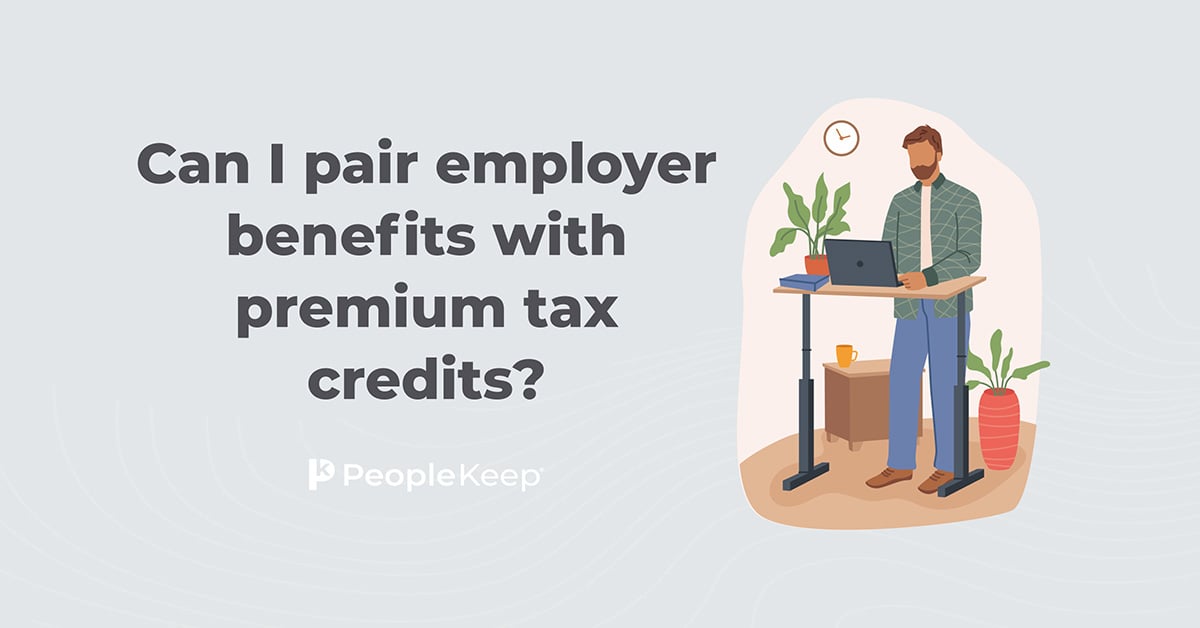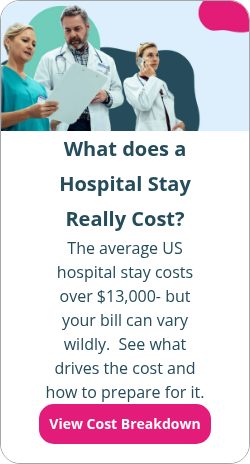Which states require you to have health insurance?
By Elizabeth Walker on March 27, 2024 at 10:40 AM
The Affordable Care Act (ACA) took great strides toward improving the affordability of and access to comprehensive healthcare nationwide. One initial aspect of the ACA required all Americans to obtain health insurance that provided minimum essential coverage (MEC) through their employer or on an individual basis or pay a federal tax penalty.
The federal government has since repealed the health coverage requirement and penalty known as the individual mandate. But, some states still require their residents to have health insurance. Having a qualified health plan to avoid fines is essential in these locations.
This blog post will walk you through which states and locations have laws requiring health insurance and how a health reimbursement arrangement (HRA) from your employer can help you satisfy the individual mandate.
Takeaways from this blog post:
- New Jersey, California, Rhode Island, Massachusetts, and the District of Columbia require their residents to have health insurance coverage or face penalties. Vermont recommends that residents have coverage, but there’s no noncompliance penalty.
- The penalty amount varies by state and can be based on income, family size, and sometimes duration without coverage. Penalty exemptions, such as lack of affordable coverage or hardship due to financial burden, are available for qualified individuals.
- A qualified small employer HRA (QSEHRA) or individual coverage HRA (ICHRA) can help employees satisfy the individual mandate. Stand-alone HRAs allow employers to reimburse employees tax-free for individual health plan premiums and other qualifying medical expenses.
What is the individual mandate?
The individual mandate was an ACA provision that required individuals to enroll in a health plan that provided MEC or pay a federal penalty when filing their annual tax return. This federal requirement aimed to keep overall health insurance premium costs low by having enough low-risk, healthy people enroll in coverage to offset high-risk individuals who needed more care, such as for chronic illnesses and pre-existing conditions.
Most Americans with health insurance plans through their employers or a government program, like Medicare and Medicaid, could satisfy the individual mandate. But, those who didn’t have health insurance had to purchase a plan on the individual market or qualify for a government health program to avoid the penalty unless they qualified for an exemption.
The penalty for not having health coverage was up to $695 per uninsured adult or 2.5% of their household income, with the IRS accessing the greater penalty of the two. The government then created a cap so that the maximum penalty amount would be the annual, national average cost of a bronze-tier health plan.
In 2017, Congress repealed the individual mandate penalties on the federal level, which went into effect in 2019. This effectively repealed the mandate, as there are no longer consequences for not having health coverage.
However, the ACA’s employer mandate is still in effect. This mandate requires applicable large employers (ALEs) to offer at least 95% of their full-time employees and their dependents MEC that’s affordable and provides minimum value or pay a financial penalty.
What states still have the individual mandate?
Since the repeal of the federal mandate, five states and the District of Columbia have created their own individual mandates. All but one of these locations have penalties individuals must pay during tax season if they can afford but don’t enroll in health coverage.
The sections below will go into detail about each state with an individual mandate so you can comply with state regulations and avoid costly fines.
1. New Jersey
The New Jersey Health Insurance Market Preservation Act of 2018 requires state residents to obtain a health plan that provides MEC or pay a shared responsibility payment. Only individuals required to file a New Jersey income tax return must pay a penalty.
You can apply for a penalty exemption if your income is below a certain threshold, you have a brief gap in coverage, your plan options are unaffordable, you’re incarcerated, you're living abroad, you're part of a recognized group (like a religious sect), or enduring hardship.
Without an exemption, you must make a shared responsibility payment when you file your annual income taxes for any months you and your covered dependents didn’t have MEC. The penalty is based on your income and household size but isn’t allowed to exceed the average annual premium for a state-based bronze level of coverage. You can use the state’s online penalty calculator to determine your payment amount for 2023.
2. California
As of 2020, California residents must have MEC for the entire calendar year or pay a penalty when filing their income tax return. This mandate applies to each resident, including their spouse (or domestic partner) and any claimed dependents.
If you qualify, you can claim an exemption to the penalty on your tax return. Eligible exemptions include certain hardships, short coverage gaps, health care sharing ministry members, etc.
Unless you’re exempt, the California Franchise Tax Board will determine your penalty using your household size and income. For 2023, the penalty will be the higher amount of either $900 per adult (and $450 per dependent child) or 2.5% of your gross income that exceeds the state filing threshold. You can use California’s penalty calculator tool to get an estimate.
3. Rhode Island
Effective January 2020, Rhode Island requires all residents to have a qualifying form of health insurance, such as employer-sponsored coverage, Medicare, Medicaid, or MEC purchased from an insurance company or through the state-based Marketplace, HealthSource RI. You must pay a penalty when you file your income taxes if you or your dependents didn’t have health insurance during the previous year.
Rhode Island accepts penalty exemptions for hardship, unaffordable coverage, citizens living abroad, part-year residents, and more. Depending on the type of exemption, you will either claim it on your income tax return or apply through HealthSource RI.
For the 2023 tax year, the penalty is the higher amount of either 2.5% of your annual household income minus any exemptions or standard deduction, or $695 per person and $347.50 per child younger than age 18. If your penalty uses the percentage method, it can’t exceed the average annual premium for a bronze-tier health plan sold through HealthSource RI. Using the flat rate method, you will only pay for those in your household without coverage.
Suppose you only had coverage for a portion of the calendar year. In this case, your penalty will be 1/12 of the total annual amount for each month you or your dependents didn’t have coverage. However, if you had a short coverage gap of one or two months in a row, you’re exempt from the penalty.
4. Massachusetts
Under Massachusetts’ Health Care Reform Law, residents age 18 and older and individuals who have become state residents within 63 days must have a health insurance plan that meets minimum creditable coverage (MCC) throughout the entire year or pay a penalty. This mandate applies to everyone who can afford health insurance but didn’t purchase it, regardless if they’re required to file a Massachusetts income tax return.
Massachusetts laws required residents to have health coverage before the creation of the ACA. When the federal individual mandate was in effect, Massachusetts suspended its penalty. After the ACA individual mandate penalties ended, Massachusetts resumed its requirement and penalty.
The penalty is based on your income, age, and family size. However, it can’t exceed half the amount of the lowest-priced self-only health plan on Massachusetts’s state-based marketplace, ConnectorCare. Penalties also compound each month you go without coverage. However, short coverage gaps of no more than three consecutive months are exempt from penalty.
Penalty exemptions exist if you have unaffordable coverage options according to the Massachusetts Health Connector affordability schedule, your income is at or below 150% of the federal poverty level threshold, or if you have experienced a hardship or other eligible circumstances.
5. District of Columbia
Since January 2020, Washington D.C. has required residents of all ages to have health insurance that provides essential coverage. As long as an individual has health coverage for one day of any month, the law considers them to have health insurance for that month.
When you file your tax return, you can claim an exemption for various circumstances like low income, or religious beliefs. Apply through the state marketplace, DC Health Link, for hardship or unaffordable coverage exemptions.
The District of Columbia determines your penalty amount using your income, family size, and how long you’ve gone without coverage. For example, if you went without health coverage for all of 2023, the penalty is the higher amount of either 2.5% of your income above the district’s tax filing threshold or $745 per person and $372.50 per child under age 18.
If using the percentage calculation, the penalty can’t exceed the average premium for a bronze-level plan on DC Health Link. With the flat fee method, families can’t receive a penalty of more than $2,235.
6. Vermont
Vermont’s H.524 medical care bill recommends that all residents older than 18 have health insurance coverage. It also provides access to Vermont Health Connect, its state-based marketplace, where residents can shop for a policy. However, the bill doesn’t require residents to pay a penalty for not obtaining health insurance. The law only requires individuals to report if they had health coverage the previous year when filing their annual tax return.
How an HRA can help you satisfy the individual mandate
Most Americans have traditional group health coverage through their employer, which satisfies the individual mandate. But, many small to midsize employers can’t offer group health insurance due to the steep premium rates and rigid participation requirements. If this describes your workplace, ask if your employer will consider offering a stand-alone HRA such as a qualified small employer HRA (QSEHRA) or an individual coverage HRA (ICHRA).
A stand-alone HRA is an IRS-approved, employer-funded health benefit that allows employers of all sizes to reimburse employees tax-free for individual health insurance premiums and other qualifying medical expenses, like mental health services and preventive care.
With an ICHRA or QSEHRA, your employer offers you a fixed amount of money, or allowance, to spend on medical care. You then pay for the medical services and items, including health insurance premiums, that meet your needs. The federal government outlines eligible items in IRS Publication 502. Once you incur a qualified expense and submit proof of purchase, your employer will reimburse you tax-free up to your allowance amount.
With an ICHRA, your employer can vary allowance amounts based on family size, employee classes, and other job-based criteria. ICHRAs have no maximum contribution limits like other health benefits, such as health savings accounts (HSA) or the QSEHRA.
An HRA can satisfy the individual mandate in your state because employees must have a qualified form of individual health coverage to participate in the benefit. If you don’t already have an individual plan, you can buy one on the federal Health Insurance Marketplace, a state-based marketplace, or a private exchange.
Before you purchase your health plan, there are a few things you need to know about how HRAs work with premium tax credits. If you qualify for a cost-saving subsidy on the Health Insurance Marketplace and your employer offers an ICHRA, you must choose between the ICHRA or your premium tax credits—you can’t have both. Your decision will depend on whether or not your ICHRA is affordable.
You should waive your subsidy and opt into the ICHRA if your benefit allowance is affordable. If it’s unaffordable, you should opt out of the ICHRA and collect your premium tax credits. If you need help deciding, you can use our ICHRA affordability calculator for guidance.
With a QSEHRA, there’s no option to opt out of the benefit. If your employer offers you an affordable allowance, you can’t collect your premium tax credits. If they offer you an unaffordable allowance, you can collect your tax credits and use your QSEHRA, but you must reduce your tax credits by the amount of your QSEHRA allowance.
Unlike traditional group health plans, an HRA provides employers with a budget-friendly health benefit and employees with more control and flexibility when considering health insurance options. Better yet, you can comply with your state’s individual mandate and receive reimbursements for your healthcare costs, saving you money in the long run.
Conclusion
While most U.S. states no longer enforce the ACA’s individual mandate, some still require their residents to have coverage to improve health outcomes and raise funds for reinsurance programs and state-based medical care subsidies. While obtaining medical coverage may seem daunting, understanding the healthcare laws in your state is essential to avoiding a penalty if you live in a state with an individual mandate.
Check out more resources
See these related articles

State-by-state guide to health insurance marketplaces
Looking for health insurance options in your state? This comprehensive guide provides a state-by-state breakdown of health insurance marketplaces.

The least and most expensive states for individual health insurance
Individual health insurance can be pricey, especially in these top 10 states. See the locations where rates are highest and how you can save on coverage.

Can I pair employer benefits with premium tax credits?
Discover if you can combine employer benefits with premium tax credits when it comes to health insurance. Get all the answers in this informative post.



